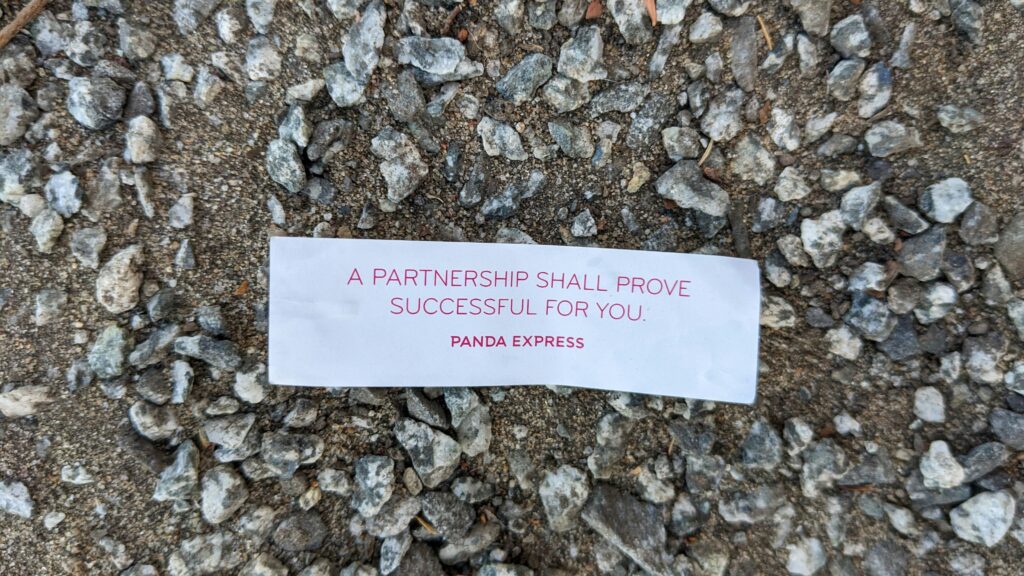Why Merch Still Works
Merch isn’t just a side hustle anymore—it’s a core part of how serious vloggers build sustainable income. The old model was simple: make content, attract viewers, hope some ad revenue trickles in. But platforms fluctuate. Algorithms shift. What doesn’t change? A loyal fanbase that wants a piece of what you stand for.
When viewers connect with a creator, it’s often more than entertainment. There’s trust, relatability, and personal investment—and merch converts that into something tangible. Not just a hoodie or a mug, but a signal: “I’m part of this tribe.”
Take creators like Emma Chamberlain or Marques Brownlee. They’re not just pushing links—they’ve embedded merchandise into the feel of their brands. Emma’s coffee line is practically a character in her vlogs. MKBHD’s minimalist style reflects right into his tech-themed apparel. Even mid-range vloggers are pulling six-figure sales through tightly branded storefronts that speak directly to their micro-audiences.
It’s not just about the money. It’s about taking what you already built—style, tone, trust—and turning it into something your followers can own. Not for the algorithm. For the people who show up, episode after episode.
Step 1: Understand Your Audience
The foundation of successful merch isn’t just a great design—it’s knowing exactly who you’re creating for. Before you print a single hoodie or drop a single sticker pack, take time to understand your audience.
Start With Data, Not Assumptions
Trying to guess what your audience wants can lead to lukewarm sales. Instead, engage directly:
- Run polls on YouTube, Instagram, or your community tab
- Ask open-ended questions in comments or Q&As
- Use simple survey tools to gather input on product types, colors, and styles
Understanding what excites your audience leads to actual purchases, not just likes.
Key Things to Learn About Your Fans
To make your merch appealing and wallet-worthy, dig into these audience insights:
- Age range: A younger Gen Z audience might prefer trendier fits, pastel colors, or meme-inspired designs, while millennials might look for quality basics with subtle branding.
- Interests: Are they here for humor, lifestyle, gaming, tech, or storytelling? Align your merch theme with the content they love most.
- Spending patterns: Can your fans afford premium gear, or do they respond better to affordable, entry-level items? Knowing their average spend helps you price right.
Design With Them in Mind
It’s easy to fall into the trap of designing merch that you love—but if it doesn’t resonate with your followers, it won’t move. Shift your mindset:
- Prioritize designs that reflect your shared in-jokes, catchphrases, or moments from your videos
- Offer choices (minimalist logo tee vs. bold graphic hoodie) to appeal to different sub-groups within your fan base
- Think wearability—would they wear it in public?
Making your merch about your community, not just your brand, is how you turn casual viewers into proud, paying supporters.
Step 2: Product Ideas That Actually Sell
Start with the basics—tees, hoodies, mugs. These are go-to merch staples because they’re simple, practical, and instantly recognizable. But don’t get stuck in the starter pack. Think beyond the usual. Your audience doesn’t need another black hoodie unless it means something to them. That’s where creativity and identity kick in.
Limited drops create urgency. Time-sensitive or one-time designs keep your community alert and eager. Drop a batch, sell out, and move on. Evergreen items, on the other hand, offer longevity. These are your brand touchpoints—things people can buy anytime to feel part of the tribe. Smart creators mix both: limited drops for hype, evergreen for steady income.
Digital merch is creeping into the mainstream, and it’s more than just flashy wallpapers. Wallpapers, access tokens to exclusive content, custom filters, digital zines—these cost nothing to ship and carry serious value if they’re tight with your content. For a vlog audience that lives online, these virtual perks hit home.
The key: your merch should exist for your community, not just your wallet. Build products that speak their language, not just your logo.
Step 3: Production & Fulfillment Without the Headache
Making merch is one thing—getting it into people’s hands is another. There are three main approaches: print-on-demand, pre-order, and bulk inventory. Each has its pros and trade-offs.
Print-on-demand is the starter pack for most vloggers. Services like Printful and Teespring handle the printing, packing, and shipping one order at a time. No upfront inventory costs, no storage, no mess. But the per-unit cost is higher, and margins stay slim unless your volume spikes. Great for testing ideas or keeping things simple.
Pre-order flips the game a bit. You launch the product, collect orders for a set period, then produce exactly what was sold. It’s more time-intensive up front but gives you control over quantity and costs. It’s ideal for limited drops or one-off campaigns where hype matters. Just make sure you’re clear on delivery timelines—fans hate waiting without updates.
Bulk inventory is high risk, high control. You produce stock in advance (often at lower cost per item), but you also handle storage, fulfillment, and unsold leftovers. If you’ve got a loyal base and want tighter branding—custom packaging, faster shipping—this might be your lane.
In terms of platforms, Shopify gives you the most control and polish, especially when paired with a print-on-demand backend. Teespring is more plug-and-play, with less setup and lower friction. Printful integrates with both, and offers slick production quality across categories.
Bottom line: choose the model that fits your scale, your schedule, and your risk tolerance. Your audience might love your content, but they’ll judge you on how quickly that hoodie shows up.
Step 5: Smart Promotion Tactics
Selling merch successfully isn’t just about making great products—it’s also about how (and when) you mention them. Promotion can feel awkward if it’s too aggressive or scripted, but when done strategically, it feels seamless and authentic.
On-Camera Placement that Feels Natural
Rather than launching into a full sales pitch, many creators are finding success by showcasing their merch casually—often just by wearing it or using it in their everyday content.
- Wear your own gear consistently in videos
- Use mugs, stickers, or accessories casually in frame
- Mention your merch in passing during routine content, like responding to a viewer question or vlog update
This approach creates curiosity without feeling pushy—and keeps branding consistent across your channel.
Scarcity that Sparks Action
One well-used technique in successful merchandise promotion is scarcity marketing. When viewers know items are limited, they’re more likely to act quickly. However, the key is creating real urgency—not false hype.
- Offer limited-edition drops with real inventory caps
- Introduce seasonal items only available for a short window
- Share behind-the-scenes content to show the process—and build anticipation
Let your audience know when something is running low, or when a design is never coming back. This motivates purchases while rewarding engaged fans.
Creating Urgency Without the Sales Pitch
Driving urgency doesn’t mean sounding like a used car commercial. Instead, make it about connection, value, and timing.
- Use language that emphasizes the experience (“You’ve been asking for this — it’s finally here”)
- Highlight stories behind designs to create emotional attachment
- Frame the merch as part of a shared journey, not just a product you’re pushing
When your audience feels involved in what you’re creating, promotion becomes a conversation—not a hard sell.
Step 5: Integrating Merch into Your Brand
Your merch line can’t feel like a side hustle. It has to live and breathe your brand, or it gets ignored. That starts with consistency—your tone, the visuals, even the packaging. If your vlog is minimalist and clean, a neon-printed hoodie doesn’t make sense. If you’re known for chaos and humor, a sleek grayscale mug might miss the mark. The test is simple: would someone know it’s yours before they even see the logo?
Catchphrases, running jokes, or even awkwardly iconic moments can become culture. What you casually say on camera becomes powerful when it’s worn on someone’s chest. The most effective pieces aren’t just merch—they’re membership badges. Viewers buy them not just because they like your channel, but because they want to belong to the world you’re building.
The most successful creators treat merch like identity. Make it feel exclusive, not generic. Give your followers a reason to wear it with pride—like they’re insiders, not just customers. That connection is what turns T-shirts into brand touchpoints. It’s not just the product. It’s the feeling behind it.
Watchouts and Real-World Tips
Let’s keep it real—selling merch isn’t just slapping your logo on a tee and watching dollars roll in. There are pitfalls to avoid. First up: don’t overproduce or overprice. Launch with a small batch or even a print-on-demand model to test demand. Going big out of the gate might leave you with a garage full of hoodies and a bruised ego. Pricing matters too. Your fans support you, but you’re not Supreme—yet. Keep it honest and accessible.
Next: customer service. It’s not the fun part, but it’s everything. Orders get lost. Sizes run weird. People want refunds. If you’re not prepared to handle that—or at least outsource it—you’ll burn goodwill fast. Set expectations clearly and respond like a human, not a bot.
And yeah, the legal stuff matters. Don’t use artwork or slogans you don’t own. File for a basic trademark if you’re serious. Licensing agreements also come into play if you’re collaborating with artists or brands. It’s worth getting that sorted before launch day. Loose ends now equal legal messes later.
Do it smart, keep it lean, and make sure your merch hustle actually supports your brand—not distracts from it.
Next-Level Strategy: Merch as Part of a Bigger Monetization Plan
Merchandise can do more than stand alone—it can amplify other income streams when integrated strategically into your broader monetization model.
Pair Merch with Memberships and Rewards
When fans pay monthly to support your content, physical or digital merchandise becomes a powerful incentive.
- Exclusive merch as a tiered reward on platforms like Patreon and Ko-fi
- Members-only products such as signed items, early releases, or limited runs
- Add real-world value to virtual subscriptions through tangible goods
Tip: Highlight merch tiers in your membership pitch videos and community updates to boost sign-ups.
Bundle and Upsell Smartly
Create product bundles or limited-time offers that make buying feel like a no-brainer.
- Combine popular merch items (e.g., hoodie + mug + digital wallpaper pack)
- Offer discounts on merch for loyal buyers or subscribers
- Use upsell tactics at checkout: “Add this sticker pack for 20% off”
The goal: increase average order value without feeling pushy.
Connect the Dots for Your Audience
Don’t assume your audience will piece everything together on their own. Tell them:
- How they can access merch through membership platforms
- Why a bundle is better value than buying individually
- What’s limited, exclusive, or only available through certain access points
Further Reading: Top Ways to Monetize Your Vlog Channel
When done right, merch becomes more than a product—it becomes part of your value ladder.
Final Thought
In 2024, merch is more than just another revenue stream—it’s a narrative device. Vloggers are no longer just selling products; they’re sending out pieces of their brand that viewers can take home, wear, rep, and live in. The right merch isn’t about trends or margins—it’s about alignment. When your audience wears your hoodie or slaps your sticker on their laptop, they’re not just fans—they’re co-authors in your story.
Done right, merch becomes something people talk about because it feels like them. That’s where the power is—it moves beyond the transaction and taps into identity. Successful creators are leaning into this, crafting merch that reflects values, in-jokes, and moments that only their true fans will get. And that’s the point. Make it personal. Make it proud. Make it part of your world, not just your store.


 Aaron Cloutieristics brings a sharp eye for digital innovation to vlogedgevault With a strong background in tech-driven content creation, Aaron focuses on exploring emerging tools, platforms, and strategies that shape the future of vlogging and online media.
Aaron Cloutieristics brings a sharp eye for digital innovation to vlogedgevault With a strong background in tech-driven content creation, Aaron focuses on exploring emerging tools, platforms, and strategies that shape the future of vlogging and online media.

